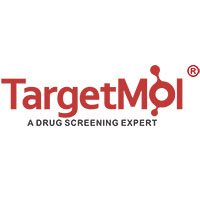| Name | PHPS1 Sodium |
| Description | PHPS1 sodium is a potent and selective inhibitor of Shp2, with Kis of 0.73, 5.8, 10.7, 5.8, and 0.47 μM for Shp2, Shp2-R362K, Shp1, PTP1B, and PTP1B-Q, respectively [1]. |
| In vitro | PHPS1, at a concentration of 30 μM and over a period of 6 days, has been shown to inhibit the proliferation of various human tumor cells. Additionally, when applied at concentrations ranging from 5 to 20 μM for durations between 5 to 360 minutes, PHPS1 specifically suppresses the phosphorylation of Erk1/2 in a dose-dependent manner, without affecting Akt and Stat3 phosphorylation. In a Cell Viability Assay using human cancer cell lines including MDA-MB-435, HCT-116, HCT-15, PC-3, HT-29, NCI-H661, and Caki-1, a 30 μM concentration of PHPS1 for 6 days resulted in varying reductions in cell numbers, with no effect (0%) on Caki-1 and up to a 74% reduction in HT-29 cells. Western Blot Analysis on Madin-Darby canine kidney (MDCK) cells treated with 5, 10, and 20 μM PHPS1 for 5 to 360 minutes indicated that PHPS1 inhibited HGF/SF-induced phosphorylation of Erk1/2 within 15 minutes to 6 hours, though transient phosphorylation of Erk1/2 after 5 minutes remained unaffected. The compound showed no influence on the HGF/SF-induced activation of PI3K/Akt or Stat3. |
| In vivo | PHPS1 (3 mg/kg; i.p. injection; daily during the last week of the high-fat diet) significantly reduced atherosclerosis (AS) susceptibility in Ldlr -/- mice[2]. Utilizing the Ldlr -/- (005061) mouse model[2] at a dosage of 3 mg/kg administered intraperitoneally (i.p.) daily during the final week of a high-fat diet, a marked decrease in aortic atherosclerotic plaque size was observed compared to control groups. |
| Storage | Powder: -20°C for 3 years | In solvent: -80°C for 1 year | Shipping with blue ice. |
| Keywords | PHPS1 Sodium | PHPS-1 Sodium |

 United States
United States
